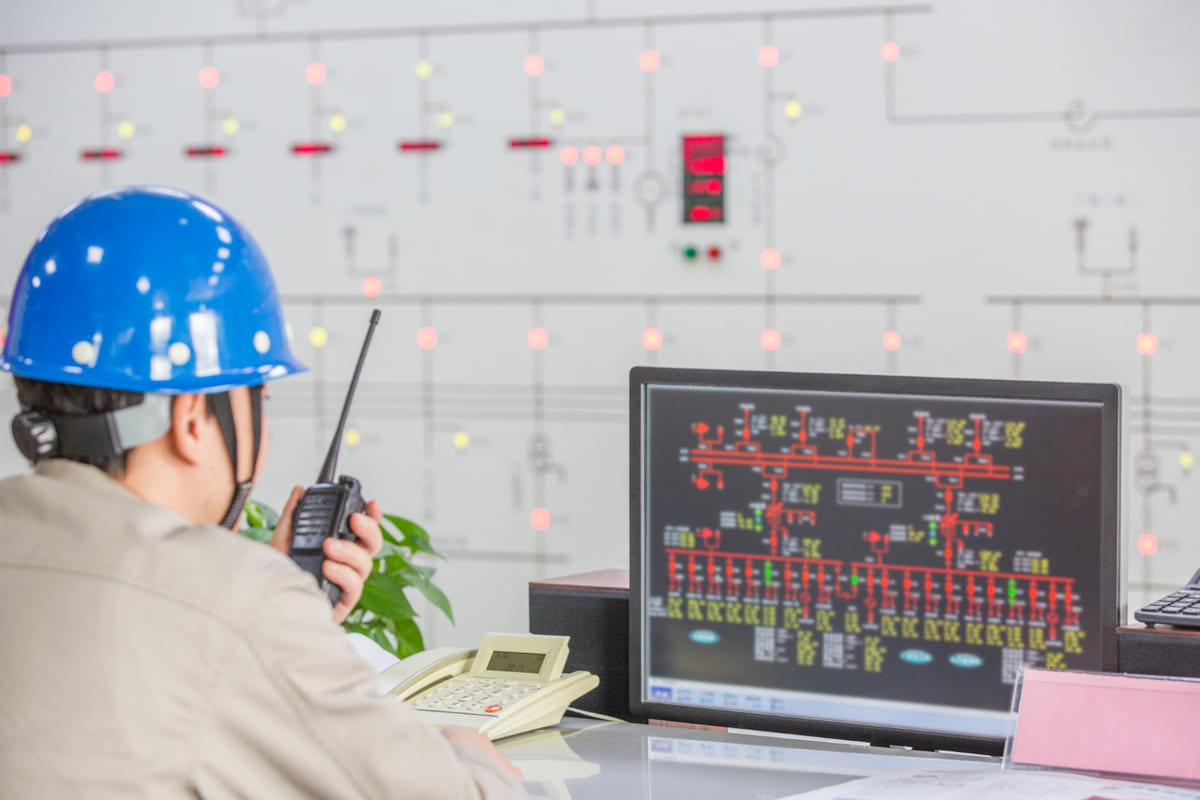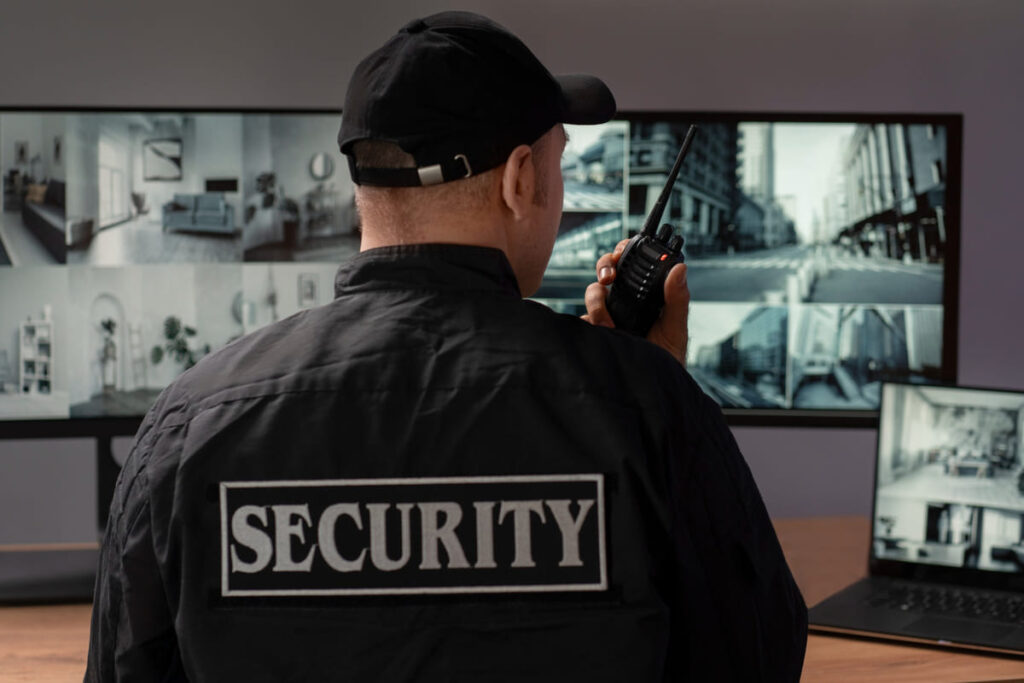Site security alarm systems are critical for protecting assets, personnel, and property across various environments. Whether it’s a construction site, commercial building, industrial plant, or institutional campus, these systems serve as both a deterrent and a detection mechanism against unauthorized entry, theft, vandalism, and other threats. A visible alarm presence – such as signage, sensors, and cameras – can discourage potential intruders before they act, while the system’s technology works continuously to detect any security breaches.
In essence, a well-designed site security alarm provides early warning of incidents, allowing security teams or authorities to respond quickly and prevent or minimize damage. This introduction outlines five essential features that make a site security alarm system effective and reliable. Each feature contributes to comprehensive protection and operational reliability, forming a checklist for what to look for when evaluating or implementing an alarm system for any type of secured site.
Table of Contents
Feature 1: Intrusion Detection and Perimeter Monitoring
Intrusion detection and perimeter monitoring form the first line of defense for any site security alarm system. This feature focuses on detecting unauthorized access at the earliest point – the site’s boundaries and entry points. By monitoring fences, gates, walls, and other perimeter areas, the system can alert security personnel the moment someone attempts to breach the property.
Modern intrusion detection relies on a variety of sensors and technologies to cover all angles of a site’s perimeter. These sensors can detect movement, vibrations, or other signs of intrusion, even in challenging outdoor conditions. Common components include:
-
Motion Detectors: Devices using infrared, microwave, or ultrasonic technology to sense movement in restricted zones. They trigger an alarm when an intruder is moving within a monitored area.
-
Fence and Barrier Sensors: Vibration or tension sensors mounted on fences and walls that detect cutting, climbing, or tampering. For example, if someone tries to cut through a fence, the disturbance activates the alarm.
-
Infrared Beam Systems: Pairs of infrared or laser beam emitters and receivers that create an invisible boundary. When the beam is broken by someone passing through, an alert is generated.
-
Ground Sensors: Buried cable or seismic sensors that register footsteps or vehicle movement on the ground along a perimeter. These are useful for detecting intruders before they even reach the fence line.
By deploying these technologies, the alarm system maintains a constant watch over the site’s exterior. For instance, on a remote construction site, motion sensors and fence alarms can immediately notify security if someone attempts to enter after hours. Intrusion detection is often linked to audible alarms or floodlights as well, startling intruders and signaling that the breach has been noticed. Moreover, effective perimeter monitoring provides early detection, giving security staff valuable time to respond before an intruder reaches high-value assets or interior areas.
It’s important to note that intrusion detection systems should be configured to minimize false alarms (e.g. triggers from wildlife or harsh weather). Pairing perimeter sensors with surveillance (see Feature 2) helps verify if an alert is a true intrusion. Overall, robust intrusion detection and perimeter monitoring is essential in a site security alarm – it establishes a protective ring around the property and immediately detects attempts to break in, forming the foundation of site security.
Feature 2: Integrated Surveillance and Sensor Compatibility
A modern site security alarm system should not operate in isolation – it thrives on integration with surveillance cameras and compatibility with various sensors. This feature ensures that the alarm system can ingest inputs from multiple device types and work in unison with other security measures for a more complete protective net. In practice, integration means linking the alarm’s sensors, cameras, and other subsystems so they coordinate their actions and provide actionable information during an incident.
Surveillance Integration: One of the most valuable integrations is between the alarm system and CCTV cameras or video surveillance. When an intrusion sensor is triggered, the system can automatically cue nearby security cameras to focus on the area of interest or begin recording. This immediate visual verification is extremely useful: security personnel (on-site or remote) can quickly see what caused the alarm – for example, an actual intruder versus a false alarm like an animal. Real-time video feeds linked with alarms allow for informed decisions (e.g. whether to dispatch guards or police) and provide recorded evidence of events. Essentially, integrated surveillance turns an alarm from just a noise-maker into a smart security platform that “sees” and confirms threats.
Sensor and System Compatibility: In addition to cameras, a site security alarm should support a wide range of sensors and related systems. Different secured sites have different risks, so the alarm system must be flexible enough to incorporate them. For example, beyond intrusion sensors, the system might include:
-
Access Control Devices: Integration with card readers or biometric scanners on doors/gates, so that forced entry or unauthorized access attempts trigger the alarm. This links physical entry control with the alarm for unified security management.
-
Door/Window Contacts and Glass Break Sensors: These detect doors or windows being opened or glass being shattered. They are vital for buildings on the site, ensuring that any breach of an entry point sets off the alarm.
-
Environmental and Safety Sensors: Many sites also need to monitor hazards like fire, smoke, gas leaks, or flooding. A comprehensive alarm system can integrate smoke detectors, heat sensors, gas leak detectors, and panic buttons. This way, all emergency alerts (security or safety) are funneled through one platform and can be responded to promptly.
-
Intercoms and Public Address Systems: Integration here means that when an alarm triggers, security personnel could speak or broadcast a message on-site (e.g. warning an intruder that they are detected, or guiding employees during an evacuation).
Compatibility is key – the alarm control panel or software should support multiple device types and communication protocols so that adding a new sensor or camera doesn’t require an entirely separate system. Many modern systems adhere to open standards for security hardware, making it easier to mix and match components from different manufacturers (for instance, using standard protocols so cameras and alarms communicate seamlessly).
An example of integrated surveillance and sensor compatibility in action: imagine an industrial facility where a restricted area is protected by both a motion detector and a security camera. If the motion detector senses movement after hours, it triggers the Site Security Alarm and simultaneously signals the linked camera to record and send a live feed to the security center. At the same time, the system checks an access control log – if no authorized badge was used in that area, it’s clearly an intrusion. This integrated response gives a complete picture of the event, allowing guards to act immediately and appropriately.
In summary, integration and compatibility transform a site security alarm from a standalone device into a comprehensive security ecosystem. It centralizes monitoring and control of different security aspects (intrusion, surveillance, access, safety) into one coherent system. This not only improves situational awareness during incidents but also simplifies daily operations – security staff can manage everything through one interface. When evaluating an alarm system, it’s essential to choose one that plays well with others, ensuring you can build a layered, all-encompassing security solution for the site.
Suggested article to read: 9 Tips to Improve Security in Construction Site

Feature 3: Real-Time Alerts and Remote Monitoring
Rapid response is crucial during any security incident, which is why real-time alerts and remote monitoring capabilities are essential features of a site security alarm system. It’s not enough for an alarm to merely make noise on-site; it should immediately notify the right people no matter where they are, and allow for oversight of the system from off-site locations. This ensures that a breach or emergency gets attention the moment it happens, drastically improving the chances of a quick and effective response.
Real-Time Alerts: A good site security alarm system will automatically send out instant alerts as soon as an alarm is triggered. These alerts can take the form of mobile push notifications, SMS text messages, emails, or automated phone calls. Typically, alerts are sent to designated recipients such as security officers, site managers, or a professional monitoring center. For example, if an intruder trips a sensor at 2 AM, the system might immediately send a text and app notification to the on-call security supervisor and simultaneously signal a central monitoring service. The alert will contain critical information like which sensor/zone was triggered and the time.
With this real-time information, responders can act within seconds – contacting law enforcement, dispatching on-site guards, or remotely addressing the intruder (if using speakers or two-way communication). The speed of these alerts is vital; any delay could give an intruder time to cause damage or escape. Real-time notification ensures that no matter when a security event occurs, it is addressed promptly, even if the site is unmanned at that moment.
Remote Monitoring and Control: Hand-in-hand with instant alerts is the ability to monitor and control the alarm system from anywhere. Remote monitoring means authorized personnel can check the status of the site’s security in real time via an online dashboard or mobile application. They can see which sensors are armed, view live camera feeds if integrated, and review alert history.
Remote control functions often include arming or disarming the alarm system, resetting alarms, or bypassing certain zones – all done securely from a home office, security headquarters, or even a phone on the go. This is especially valuable for large sites or operations with multiple facilities, as it centralizes security management. For instance, a facility manager traveling off-site can still verify that the warehouse alarm is armed each night and be alerted if anything goes wrong.
Remote monitoring services provided by third-party security companies are also common. In that setup, once the Site Security Alarm triggers, a 24/7 monitoring center receives the alert in real time. Trained operators can then follow a prescribed protocol: checking camera feeds, calling the site or keyholders, and notifying police or fire services if needed. This professional oversight means the site is protected around the clock, even when owners or local staff are unavailable.
Practical benefits: Real-time alerts coupled with remote access significantly enhance situational awareness and response. They provide peace of mind because one knows immediately if something is amiss. For example, consider a commercial office building after hours: a break-in attempt triggers the alarm, and within seconds the property manager and a contracted security service receive alerts. The manager opens the security app, sees live video of an intruder, and confirms it’s not a false alarm. The security service has already dispatched law enforcement. Within minutes, authorities are on-site, potentially catching the intruder in the act – all because the alarm’s notifications were instantaneous and people could act without needing to be physically present.
In summary, an essential feature of effective site security alarms is the ability to alert key responders in real time and enable remote system oversight. This ensures that no alarm event goes unnoticed and that responses can be initiated immediately from anywhere. When selecting an alarm system, look for features like multi-channel alert notifications, mobile app support, and compatibility with professional monitoring services. These capabilities make the difference between simply sounding an alarm and actually mobilizing a swift, coordinated security response.

Feature 4: System Scalability and Modular Design
Security needs can evolve over time – a construction site grows as new phases begin, a business expands to additional buildings, or an institution upgrades its security protocols. For this reason, a site security alarm system must offer scalability and a modular design. In simple terms, the system should be able to grow and adapt without requiring an entirely new installation each time the site changes. This feature ensures that the alarm system remains effective and right-sized for the site throughout its lifecycle.
Scalability: A scalable site security alarm can handle an increasing number of devices, larger coverage areas, or even multiple sites under one management platform. Initially, you might only need a basic setup (for example, a few sensors covering a small perimeter). But if the secured site expands – perhaps the perimeter extends, or additional structures require protection – a scalable system allows you to add more sensors, cameras, and alarm zones easily. The control panel or central system should support a high (or unlimited) number of sensors so you’re not capped by the original system size. Additionally, software should allow new zones or user accounts to be created to accommodate growth.
Scalability also means the system’s performance and communication can handle the extra load (e.g. more alerts, more data from cameras) without lag or failure. For instance, an industrial complex might start with one warehouse secured, then later integrate a second warehouse and an outdoor storage yard into the same alarm system. A scalable alarm platform would make this integration seamless, treating the new additions as just more zones to monitor rather than needing a separate alarm for each building.
Modular Design: Modular design goes hand in hand with scalability. It implies that the alarm system is built in components or modules that can be upgraded or expanded as needed. Hardware modularity could mean having expansion modules for additional sensor inputs, add-on wireless receivers, or extra communication modules (like adding a cellular communicator module to a base alarm unit). On the software side, modularity might involve licensing additional features or integration capabilities as the site’s needs broaden. The benefit of a modular approach is flexibility – you can customize the system with only the features needed initially, and later plug in new modules for new requirements.
For example, an institutional campus may initially deploy an intrusion alarm module and a basic camera integration. Later, they decide to incorporate an access control module to manage entry doors within the same system, and perhaps a building automation integration module to tie in emergency lighting or HVAC shutdown during alarms. If the system was modular by design, these additions are straightforward and cost-effective. Conversely, a non-modular (fixed) system might force a complete replacement or parallel system for these new functions.
Future-Proofing and Adaptability: Scalability and modularity together contribute to future-proofing the security investment. Technology and security threats evolve – a modular, scalable alarm system can adapt to these changes. For instance, if new types of sensors (maybe drone detection or advanced analytics sensors) become relevant to your site, a compatible modular system could integrate them, whereas a closed, non-expandable system could not. Similarly, if your security strategy shifts to a centralized model managing multiple facilities, a scalable system would allow connecting all site alarms into one interface for oversight. Designing with growth in mind means the alarm system stays relevant years down the line, providing continuous protection without major overhauls.
In practical terms, when evaluating a site security alarm, consider questions like: Can I add more sensors or cameras easily if needed? Does the vendor offer expansion modules or upgrades to extend functionality? Can the system software manage multiple locations or an increased number of users? The answers should indicate that the system can expand alongside your operations. A real-world example could be a large retail chain that initially secures one warehouse, then expands the same system template to 10 warehouses nationwide. A scalable, networked alarm solution would let them monitor all sites collectively and maintain consistent security policies everywhere.
To sum up, an essential feature of top-tier site security alarm systems is their scalability and modular design. This ensures flexibility, longevity, and cost-effectiveness. The system can start small and simple, and progressively grow in size and capabilities as required – all while maintaining integration as a single, coherent system. By investing in an alarm system built to scale, organizations ensure that their security infrastructure can handle tomorrow’s challenges as well as today’s.
Feature 5: Power and Communication Redundancy
A site security alarm system is only as good as its ability to function during an emergency. Intruders and adverse events won’t conveniently occur when all systems are nominal – in fact, they might coincide with power outages or communication failures, or even be the cause of them. Therefore, a crucial feature to look for is power and communication redundancy, meaning the alarm system has backup plans for its power supply and its alerting pathways. This ensures that, even under duress (like a blackout or a line cut), the alarm remains operational and capable of summoning help.
Backup Power Supply: One aspect of redundancy is having a reliable backup power source. The alarm’s control panel, sensors, and communication devices typically run on mains electricity. If that power is lost – due to an outage, electrical failure, or someone deliberately cutting power – a secure alarm system will automatically switch to an alternate power source.
Most commonly, this is a rechargeable battery backup built into the system, capable of running the alarm for several hours (or even days, depending on the system and battery capacity). In high-security or remote sites, additional backup options might include generators or solar power support to recharge the batteries. The key is that the alarm doesn’t shut down when the lights go out. For example, if a severe storm knocks out power across a campus at night, the site security alarm should seamlessly continue operating on battery power.
All sensors and detection equipment stay active, and if an intrusion occurs in the dark, the sirens and alerts will still function. Power redundancy prevents a situation where intruders take advantage of power failures – it closes that potential security gap. When reviewing alarm systems, check that a backup battery is included and understand how long it can keep the system running. Also consider smart features like battery health monitoring and alerts for low battery, so maintenance can ensure backup power is always ready.
Redundant Communication Channels: The second critical aspect is communication redundancy. The moment an alarm triggers, the system needs to send out alerts (to owners, monitoring centers, police, etc.). If the primary communication method is compromised, a backup method should take over. Traditionally, many alarm systems sent signals over a phone line or internet connection. However, an intruder might cut phone and data lines as a tactic, or an outage could knock out internet service.

A robust Site Security Alarm uses multiple communication paths to guarantee the alarm signal can get out. For instance, a system might use a dual-path setup: the primary path is via the internet (IP communications), and the secondary path is a cellular network module. Under normal conditions, alerts go out over the internet, but if that fails, the cellular radio automatically transmits the alarm over the mobile network. Some advanced systems might include even a third path, such as a radio frequency transmitter or satellite link for extremely remote areas. The goal is that at least one path is always available to reach responders.
For example, consider a warehouse alarm that primarily uses a broadband connection to a monitoring service. An intruder cuts the building’s phone/data line before breaking in. A well-designed redundant system will detect the line failure and switch to a backup cellular communicator. Thus, when the intruder proceeds and trips a motion sensor, the alarm signal is sent via the cellular channel without delay.
The monitoring center receives the alert and notifies police, thwarting the intruder’s attempt to isolate the alarm. In another scenario, imagine a regional power outage where both electricity and internet are down; the alarm’s battery keeps it running, and its cellular module (running on battery) still sends out alerts. From the end-user perspective, this redundancy means peace of mind that no single point of failure (power or network) will disable your security system when it’s needed most.
Tamper Protection: Alongside backup power and communications, many quality alarm systems also have tamper-detection features as part of redundancy and security. This includes triggers for if someone tries to open the alarm control panel, cut the siren wires, or jam the signal – the system will send a warning if it detects such tampering, often using its backup channel. While not exactly a “backup” system, it complements communication redundancy by ensuring sabotage attempts are noticed and reported.
In summary, power and communication redundancy are essential features that contribute to the reliability of a site security alarm system. They ensure the alarm remains active and connected under all circumstances – power outages, technical failures, or intentional interference. When assessing an alarm system, ask about the backup battery duration and the types of communication channels available (e.g. does it support cellular backup, dual-path monitoring, etc.).
A resilient system might advertise compliance with standards (for instance, fire/security codes often mandate 24-hour battery backups and dual communication paths for monitored systems). By choosing an alarm with robust redundancy, you are effectively hardening your site’s security – the alarm will be ready to signal for help at any critical moment, without suffering downtime just when an incident is occurring. This feature is indispensable for overall site protection and operational reliability of the security infrastructure.
FAQs
How does a Site Security Alarm system detect intruders and unauthorized entry?
A Site Security Alarm system detects intruders through a network of sensors placed at key points like perimeters, doors, and windows. Motion detectors, infrared beams, and vibration sensors on fences are commonly used to spot movement or tampering. When an intruder crosses a protected boundary or opens a secured door, these sensors trigger the alarm. The system’s control panel then sounds sirens and sends alerts to notify security personnel that an unauthorized entry is occurring. This multi-sensor approach allows the Site Security Alarm to catch intruders quickly, often before they reach critical areas.
What types of sensors can be integrated into a Site Security Alarm system?
A Site Security Alarm system can integrate a wide variety of sensors to address different security and safety concerns. Intrusion sensors like motion detectors, door/window contact sensors, and glass break sensors are standard for detecting break-ins. Many systems also support environmental sensors such as smoke detectors, heat sensors, and carbon monoxide detectors to monitor for fire or hazardous conditions.
Additionally, specialized sensors like flood/water leak detectors or gas leak sensors can be tied in. Access control components (e.g. badge readers or gate sensors) may also interface with the alarm. All these sensors feed into the Site Security Alarm system’s central panel or software, which allows it to monitor many aspects of site safety and security together. This integration creates a more comprehensive protection system than an alarm that only watches for intruders.
Which sites or facilities benefit the most from having a Site Security Alarm system?
Almost any facility with assets or people to protect can benefit from a Site Security Alarm system. Construction sites, for example, use these systems to prevent equipment theft and vandalism after hours. Commercial offices and retail stores benefit by deterring break-ins and quickly detecting any after-hours intrusions. Industrial facilities (plants, warehouses, utilities) often have large perimeters and dangerous materials, so an alarm system helps secure the premises and warn of any breaches.
Institutional sites like schools, hospitals, and campuses also use site security alarms to enhance safety, controlling after-hours access and integrating with fire safety systems. In short, any site that needs to be secured – whether temporarily (like a construction project) or permanently (like a business or campus) – will gain better protection and peace of mind with a properly equipped Site Security Alarm system.
Is it true that a Site Security Alarm will work during a power outage?
Yes, a well-designed Site Security Alarm will continue to work during a power outage. Most modern alarm systems include a backup battery that automatically powers the system if the main electricity supply fails. This means the sensors, control panel, and communication devices stay operational for a certain period (often several hours or more) without external power.
Additionally, if the alarm system sends alerts through phone lines or the internet, it often has a cellular backup channel that will be used if the primary communication is down (which can happen during outages). As a result, even in a blackout, the alarm can still detect intruders and send out emergency alerts. It’s important to ensure the system’s backup battery is maintained, but it is true that with these redundancies in place, a Site Security Alarm remains effective during power failures.
Conclusion
In conclusion, these five essential features – Intrusion Detection and Perimeter Monitoring, Integrated Surveillance and Sensor Compatibility, Real-Time Alerts and Remote Monitoring, System Scalability and Modular Design, and Power and Communication Redundancy – work together to form a comprehensive and dependable site security alarm system. Each feature addresses a vital aspect of security:
-
Intrusion detection secures the perimeter and entry points, providing early warning of any unauthorized access.
-
Integration with cameras and various sensors ensures that the alarm system has “eyes” on the situation and can cover a broad range of threats (from break-ins to environmental hazards) under one cohesive system.
-
Real-time alerting and remote monitoring capabilities guarantee that when something happens, the right people know about it instantly and can respond, even from off-site locations.
-
Scalability and modularity mean the system can adapt to growing or changing security needs, protecting investments and allowing the alarm to remain effective as the site evolves.
-
Redundancy in power and communications ensures the alarm stays functional and can call for help under any conditions, reinforcing trust in the system’s reliability.
Together, these features contribute to layered security and operational resilience. A site security alarm system built with these in mind will not only detect threats but also help verify them, notify responders without delay, adapt to new challenges, and remain operational when adversities strike. For any organization or individual responsible for safeguarding a site – be it a construction zone, corporate campus, factory, or educational institution – understanding and implementing these key features is crucial. They collectively reduce vulnerabilities and strengthen the security posture of the site.
When evaluating site security alarm systems, use this five-point feature list as a guide. It will help in selecting a solution that covers all bases, from the fence line to the control room, and from day-to-day expansion to worst-case scenarios. Ultimately, an alarm system with these essential features provides a robust shield for the site and peace of mind for those in charge of its security, knowing that the site is protected by a reliable, comprehensive alarm system that leaves no critical gap unaddressed.
Resources:
-
National Protective Security Authority (NPSA). (2023). Perimeter Intrusion Detection.
-
SecuriThings. (2023). Physical Security Systems.
-
Safeguard Systems. (2022). Why Perimeter Security Systems are Essential to Protecting Sites and Assets.
-
Bright Force Electrical. (2025). Integrating Sensors and Cameras for Maximum Protection.
-
PrairieTech. (n.d.). What are the Key Features of Alarm Monitoring Systems?
For all the pictures: Freepik
Suggested article for reading:
5 Common Types of Concrete Sensors and Their Roles in Modern Construction
8 Must-Know Principles of Modern Architecture for Aspiring Designers
Top 7 Home Security Alarm Systems for 2025: Protect Your Home with the Latest Technology
Top 10 Modern Architecture Styles: From Bauhaus to Brutalism
Biophilic Design in the Workplace: Boosting Employee Well-being and Productivity





